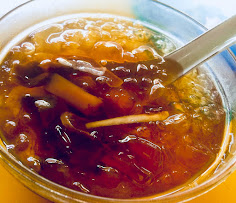Sungei Buloh Wetland - Nature reserve with Crocodiles

Where can you find some wildlife apart from the zoo in urban Singapore? Sungei Buloh Wetland Reserve is located at the quiet remote corner of northwestern part of Singapore. Buloh is a Malay word for bamboo. And Sungei means river. Therefore, Sungei Buloh means Bamboo River. Simply because it is located along Buloh River. Maybe there are many bamboos which grow in the area previously You certainly can see some bamboos there. The rich mangroves at Sungei Buloh were once used as a spawning location and nursery by prawn and fish farmers. The wetland reserve officially opened in 1993. But since 2002, the 202 hectares of rich biodiversity of wetlands of mangrove swamps, mudflats, ponds and secondary tropical rainforests of Sungei Buloh has been protected as a nature reserve. Sungei Buloh Wetland is a member of the East Asia-Australasian Flyway Partnership and is Singapore's fist ASEAN Heritage Park. What do mangroves do? They contribute to soil formation and help to stabilise coastline





